Executive Summary
Jono Limited is a medium-sized firm that handles the manufacture and export of meat to the Middle East. Owing to the fact that the company has been recently increasing its business base, it is faced with a crisis in handling the various levels of paperwork that are required to ensure that the operations of the business are carried out efficiently. In order to solve this problem, the firm has decided to implement an information technology system in order to enable it to handle its growing number of customers. The system will modify the already existing processes in order to come up with an information system that analyzes the data and information that the firm uses daily. In so doing, several changes have to be made to the existing infrastructure within the organization including the introduction of new computer systems and printers. This will also allow for the development and implementation of computer software that can comfortably handle their growing user needs. These systems will be developed in such a way that the security of information within the firm is maintained and all the employees are trained on their use so as to improve the revenue that the firm receives annually.
Introduction
Jono Limited is a medium-sized business organization that deals with the export of meat and meat products to the Middle East. Located in the business district, the company has several partner companies in the Middle East to whom it exports these products to who in turn ensure that they are in circulation. Jono Limited operates on the vision of meat at its best. In so doing, it ensures that only quality meat is used to produce their products thus ensuring that there is an uninterrupted chain of quality from production to delivery to the consumer.
The company currently has an employee base of 32 with 20 having been hired on a permanent basis and the remaining on a casual temporary basis with renewable contract periods. It has suppliers from all over the country who ensure that the high-quality products are delivered to the business’s slaughterhouse in time. The quality of these suppliers is vetted from time to time to ensure that they are using standard and up-to-date systems to produce these animals. Other suppliers base their production on the use of organic feeds that ensure that the organic nature of the meat is enhanced during production. The company is also in partnership with the government bureau of standards and export control authorities to further authenticate the quality of products that they produce before they are sent to the consumer.
The company has got a state-of-the-art slaughtering house and production site that allows for proper and sanitary handling of food materials from the time that they arrive from the suppliers up to the time that they are packaged for export. Ownership includes that of a private grazing field that allows for the animals to be purchased alive and kept for several days for observation and inspection before they are slaughtered. This also allows for the company to ensure that there is no shortage in production through the constant presence of livestock for the next day.
The company, due to its simplistic nature has got a few departments that facilitate the smooth running of day-to-day operations. This includes the production department, sales department, and logistics department. Each department is headed by a respective departmental head who reports to the overall company manager who is in charge of the overall operations of the company. There are several members of staff who are within the various departments who are in charge of the various processes within these departments.
Problem Statement
The company has recently expanded its business base and increased the number of companies to which it places its supplies in the Middle East and as such has had to increase the number of animals that it slaughters in a day. This has led to an increase in the amount of paperwork that is used during operations within the organization leading to an overcrowded filing system, lost or missing records, and a general burden on the existing workforce. This has led to a great inefficiency in the operational system of the company.
The rationale for the new system
In light of the above problems, it is imperative that the company make changes to its operations so as to ensure efficiency within its management processes (O’Brien & Marakas, 2010). It has thus been proposed that the company implement an information technology system within the logistics department that will ensure the smooth performance of processes within the company. The logistics department was identified because it is the major department within the organization that handles the export operations within the organization. In addition, it looks into the day-to-day movement of sales and supplies within the organization making it a very busy department.
Aim
To improve business operations within the logistics department at Jono Limited.
Objectives
- To develop an information technology system for the logistics department at Jono Limited.
- To implement an information technology system for the logistics department at Jono Limited.
- To improve the efficiency of operations at the logistics department at Jono Limited.
IT System Options and System Design
An initial analysis of the present system will be carried out to determine the various processes and procedures that are carried out within the logistics department (Parsons & Oja, 2007). This includes purchasing animals from suppliers and export management to the intended countries. The various inputs and outputs that are used within these processes are also documented. A requirement analysis will also be done in order to determine some of the various features or aspects such as reports and invoices that will be needed by staff and customers who are under the company. This will provide a great deal of information that will allow for the development of a new information system.
The system will then be developed with the use of information from the analysis stage that will allow for new solutions to the problems that the company was facing. Special programming software will be used to develop an interactive information system that will be linked to a database (Surhone, Timpledon & Marseken, 2009). This database will be created using Microsoft Access and will be used to store information about the company’s suppliers, buyers and will be linked using sales or export information. This will detail the amount of money owed by and expected from each of the various companies as a result of the various transactions that will be undertaken by the company.
The information from this database will be manipulated through the use of Microsoft Visual Basic programming software (version 6) (Tidrow & Otchet, 2008). This will allow for the development of a friendly graphical user interface to eliminate the stress and errors involved in manipulating data directly from the database (Simpson, 2007). This program will also allow for the manipulation of the data through the use of inbuilt formulas that manipulate the data while obscuring the user from all these lengthy processes.
The program will again allow for the user to enter data, delete, view, and perform all other editing functions on the existing data with adequate security that will allow for the integrity of the information. The production of reports and summaries will also be very easy as objective buttons will be placed on the forms that will enable the users to develop these reports at the click of a button.
Spreadsheets will also be used to implement certain sections of the program design because of the advanced nature of the calculations that it is capable of (Rickaby, 2007). Large calculations involving tax and various deductions will be done using this program and the reports linked to the main program with special features allowing for the quick production of reports. The logistics department is known to involve large sums of money and transactions that will be well suited when processed within this system.
As such, the company will be required to implement various changes in its operating systems through the introduction of various computers and printers. Computers will be required with the following specifications:
- Pentium four based on Intel
- Operating system: Windows service pack 2 and above.
- RAM 256
Other hardware components that will also be required include:
- High resolution colored monitors
- Optical mouse
- Qwerty keyboard
- High-resolution printer
Implementation Plan and Business Benefits
Implementation of the new information technology system will take place in steps that will be in a phased manner. The equipment necessary for the utilization of the new information system will first of all have to be put into place. This will include the installation of a computer processor, monitor, keyboard, and mouse (Elliot, 2004). Only one system will be introduced at first to allow for a trial phase to be conducted for the program. Within this computer, the program will be installed after which a sample of data will be entered to test whether the program can support the information. It is at this stage that errors within the system can be spotted and corrected by the developer before they can be fully implemented.
After the trial stage, the new systems will thus be implemented in a step-by-step manner, beginning with one office before moving to the next (Rainer & Turban, 2008). Its successful operation in one area will allow for its introduction to the next in a step-by-step series. Once this has been done, a series of data will then be entered to test whether the system can work on several computers and produce accurate information. These computers will also be networked within the local area network to ensure that information can be shared within computers. Testing will again be done in this phase and in the presence of errors, the system will go back to the design phase and have these errors corrected (Bloomfield, 1997). Once it has been ascertained that the system can operate in this manner, it will thus be fully implemented into the company and all the necessary records transferred into this database to make it fully functional.
Training will also be done on the existing members of staff on the use of these new systems to ensure that they are conversant with their modes of operation. This will also be a good forum to introduce the system to some of the new members of staff and allow them to test the system for themselves. It is again during such forums that errors and challenges encountered by the employees in the use of this system can be raised and handled. This training will take place from time to time to ensure that employees are refreshed and reinforced on some of the facts that they already know about the use of the system.
Evaluation of the business benefits arising from the proposed system.
Evaluation of the system will be done in various ways including the use of feedback forms from the employees. As they are the ones who will be using the system, they will be in a better position to give feedback on some of the challenges that they have faced in the use of the system. It will also include some of the possible changes that they would like to be made to the system to allow their work to proceed with ease (Wigand, Mertens &Bodendorf, 2003).
Expenses will also be compared and gauged upon the revenue that has been generated during the specified period of time. The overall profits that the company receives should have increased significantly to denote a certain level of progress within the company. The overall time it takes to generate a report should also be compared in the current time and at a previous baseline period. This will allow for the fair comparison and identification of differences in the time that it takes to get a report. This time should have been reduced owing to the fact that the new system is much faster in generating a number of records in a short time.
Management Challenges
Security
This was a common concern before the introduction of the new system into the company. Security can be perceived in a number of ways stemming from the fundamental security of records that are present within the company. The use of the traditional filing system has its own disadvantages in that it consumes space and the likelihood of records getting lost or destroyed is very high. Other security concerns like the likelihood of other unwanted parties getting hold of the information were also major concerns as it compromises the security of the information. These problems, it is thought, are addressed through the introduction of the information systems when indeed they could be the cause of other security problems (Carr, Snyder & Bailey, 2009).
The use of computers is associated with the presence of viruses and other malware that seek to destroy the integrity of data or information within a computer system. The newly developed information system will also have these challenges especially if it is connected to a local area network or wide area network or better yet, the World Wide Web. The proposed system will thus have a series of measures that will ensure that the security of information within the system is enhanced. This will be done through the use of antivirus software that will allow for the prevention, identification, neutralization, and isolation of any malware that attempts to reduce the integrity of data within the system (Carr, Snyder & Bailey, 2009). Through the use of passwords, the number of users will also be limited to members of staff who have got passwords and staff identification numbers that will ensure that only restricted access is allowed.
Ethics
Information that is within the databases as pertains to the private information of the suppliers and buyers will also be kept away from restricted access. The privacy of these people will further be enhanced by ensuring that sensitive information is not placed in the databases as they may create an ethical breach. Contact will also only be done from specific electronic mail addresses that will ensure that only the authorized members of staff communicate with these people.
Contracts that have been developed with the buyers and suppliers will also be honored through the use of the system. It will allow for the quick processing of payment information, receipts, and invoices that will ensure client satisfaction and the maintenance of practical business ethics.
Quality and Change management
Within any system, there are often human errors that are experienced in the entry of data within the office. Hence, an employee may indicate the wrong number of kilograms or misspell the name of the supplier to whom the order is going. As a result, there may result in some inefficiencies in the use of the system. Human error is inevitable but often reduces the quality of information that is present within a system and as such should be eliminated (Cowan, 2009).
Within the proposed system, issues of quality are enhanced through a series of validation checks that the information is passed through. The entry of data is validated through the use of predefined formats that ensure that only correct data is entered. This validation is also done through the use of error messages that flag any records that are not within the normal predefined or expected format (Singh, 2009). Outrageous values or outliers are also identified by some software systems and flagged pending user correction in order to ensure that the records are correctly entered.
Change is inevitable and must be embraced as it is an important part of daily life. Training should thus be conducted to sensitize the employees on the importance of the new system and why it is being implemented (Haitti & Creasey, 2003). This is because some of the employees may perceive that their jobs are being replaced by the use of machines and other computer-generated reporting systems. As a result, it is important that specific aspects of change management are handled to allow employees to fully embrace the system. This change, within the proposed system, is handled through the development of user interactive systems that allow the employees to interact with the computer software in a manner that enhances dependency within the systems. In this way, employees will feel that they are needed in the process of operating the software and giving it specific instructions on the type of reports to generate.
Conclusion
In conclusion, it is thus important that the company implement the information technology systems in order to improve their operations. In a business world that is slowly expanding, it is important that the old systems of operation be replaced or modified into the newer systems of operation that implement the use of information technology (Paton & McCalman, 2008). The other modes of operating pose significant challenges to the efficiency of work production. As the number of new buyers or accounts goes up, so does the level of paperwork that has to be done in order to process those transactions. In this way, there are a lot of security concerns relating to the loss or misplacement of these records or simply whether there is really enough time to record these accounts and go on with the rest of the day’s business. The need for an information system cannot be ignored as it leads to better efficiency in service delivery that is achieved leading to the total increase in company revenue over the years. In light of this information, it is recommended that Jono Limited implement the information technology system in order to improve the efficiency of their business operations and increase their revenue margin.
Appendices
Microsoft Access suppliers’ database
Below is a screen dump of a Microsoft Access database created with up to six suppliers of the information technology system.
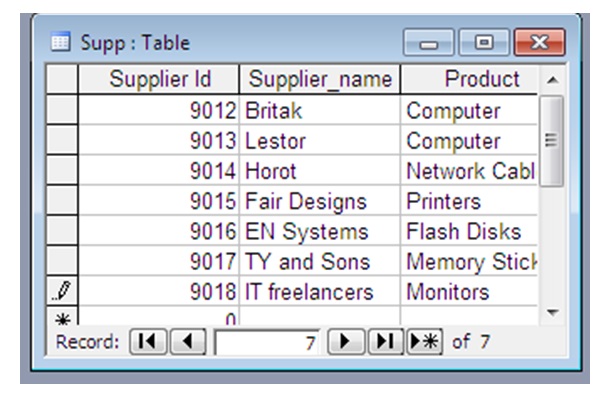
Microsoft Excel costing spreadsheet
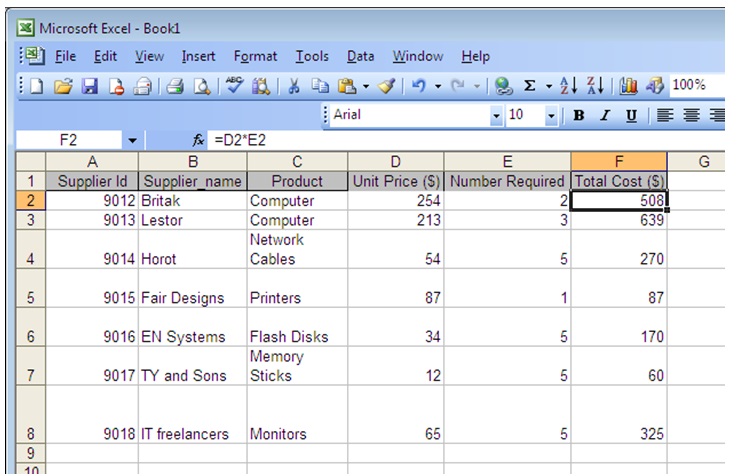
The following is a screen dump of the spreadsheet created in Microsoft Excel detailing the items and costs for the development of the new system.
Microsoft PowerPoint promotional presentation
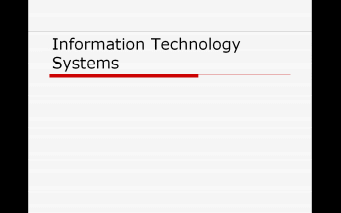
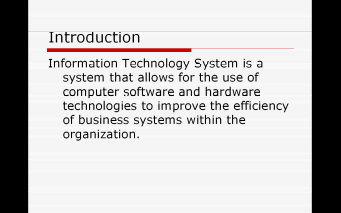
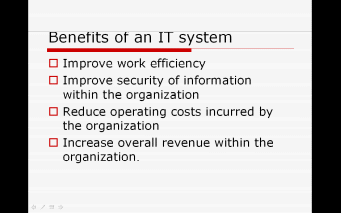
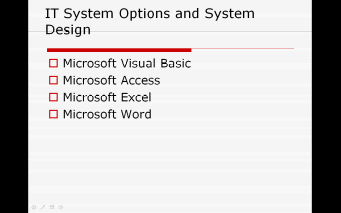
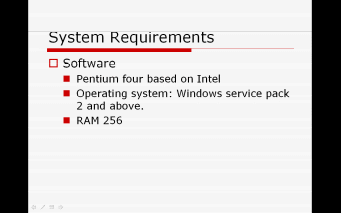
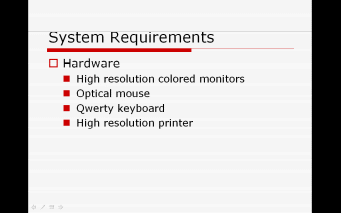
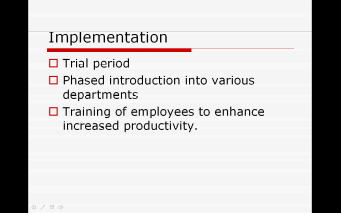
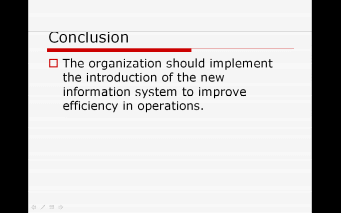
References
Bloomfield, B. 1997. Information technology and organizations: strategies, networks and integration. Oxford: Oxford University Press.
Carr, H., Snyder, C. and Bailey, B. 2009. The management of network security: Technology, design and management control. London: Prentice Hall.
Cowan, S. 2009. Change management. 2nd edn. New Delhi: PHI Learning Pvt. Ltd.
Elliot, G. 2004. Global business information technology: an integrated systems approach. Boston: Pearson / Addison Wesley.
Haitt, J. and Creasey, T. 2003. Change management: the people side of change. Loveland: Prosci.
O’Brien, J. and Marakas, G., 2010. Introduction to Information Systems, 15th Edition. New York: McGraw-Hill.
Parsons, J. and Oja, D. 2007. New Perspectives, computer concepts. 10th edn. New Yprk: Cengage Learning.
Paton, R. and McCalman, J. 2008. Change management: A guide to effective implementation. 3rd edn. London: Sage Publications Ltd.
Rainer, R. and Turban, E. 2008. Introduction to information systems: supporting and transforming business. 2nd edn. New York: John Wiley and Sons.
Rickaby, S., 2007. Introductory IT Skills – Office XP Edition. London: Thomson Learning.
Simpson, A., 2007. Microsoft Office Access 2007 all-in-one desk reference for dummies. Chichester: John Wiley.
Singh, T. 2009. Network security and change management. 2nd edn. New Delhi PHI Learning Pvt. Ltd.
Surhone, L., Timpledon, M. and Marseken, S. 2009. Systens Development Life Cycle: Systems Development Life Cycle, Systems Engineering, Software Engineering, Software Development Methodology, Software Development Process, Requirement, Unit Testing. Saar Brucken: Betascript Publishers.
Tidrow, R. and Otchet, E. 2008. IBM Lotus Symphony for Dummies. New York: John Wiley and Sons.
Wigand, R., Mertens, P. and Bodendorf, F. 2003. Introduction to business information systems. New York: Springer.